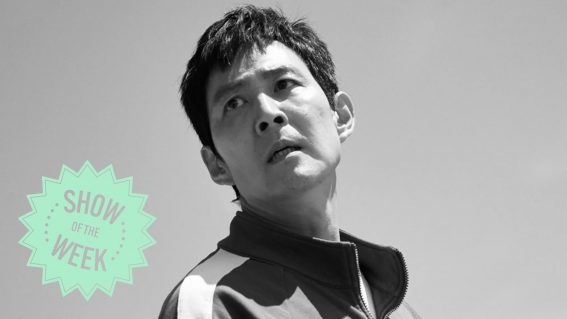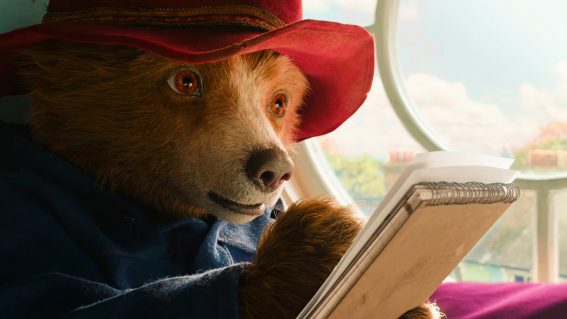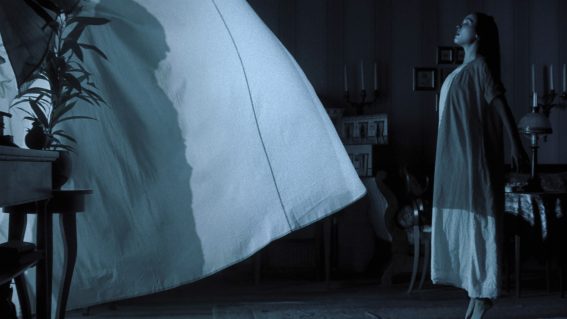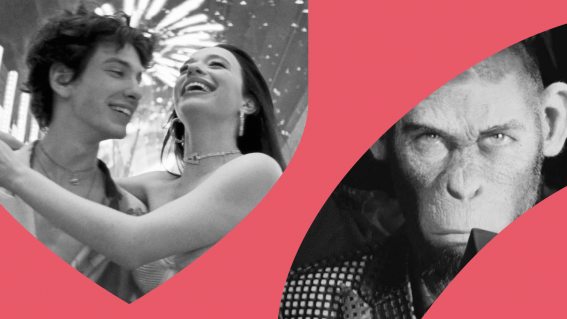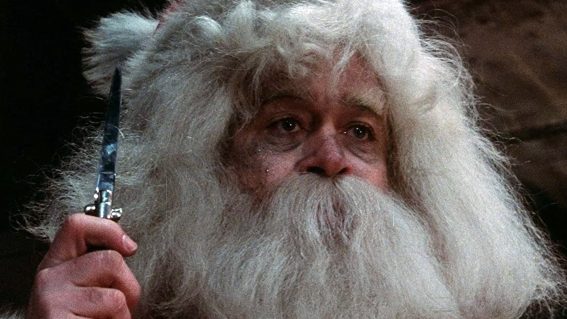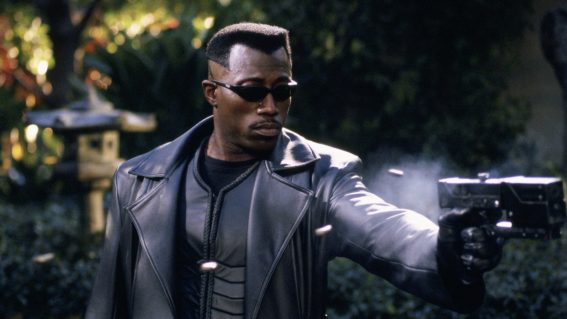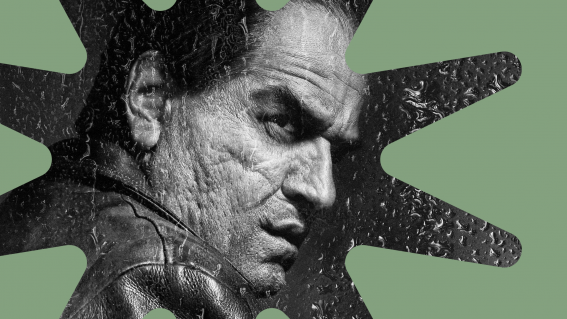Interview: ‘Life of Pi’ Screenwriter David Magee
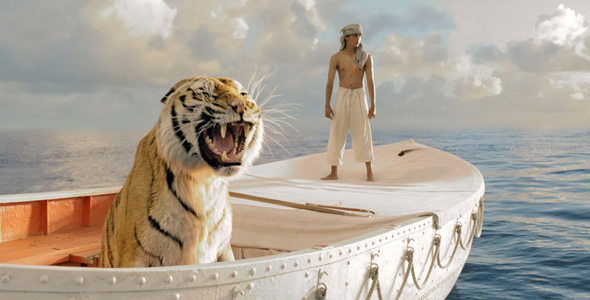
Ang Lee’s ambitious and visually sumptuous new film Life of Pi opens here on New Year’s Day. Lee’s the latest in a line of directors that have attempted to bring this difficult book to the big screen, and with the help of Finding Neverland screenwriter David Magee has succeeded in making what many thought was an unfilmable movie. We spoke to Magee about the screenwriting process and the challenges in adapting this beloved novel.
FLICKS: So, there have been a number of attempts to get Life of Pi to the big screen. I suppose it was Ang Lee that made this one succeed.
David Magee: Sure, it was a huge draw in the making and marketing of the film. And I don’t know if we could have gotten it made, without Ang at the helm. I read the book about ten years ago and at the time I was on the set of Finding Neverland and mentioned to the director “Hey, this is a good book,” and he said; “Is it a film?” and I said; “You know, I don’t think so, it’s kind of too hard to make.”
And so I really didn’t give it any more thought. It was in development back then and several directors and writers circled around it, gave it a look and considered doing it. But none of their attempts came to fruition, not until about four ago when Ang Lee got involved and got interested.
That’s when he said, “Yes I’m interested in doing it.” The studio said “What writer would you like to work with?” Ang and I had circled around the possibility of working together on a very different project that never went anywhere, so I got a call from my agent who said “You ever read Life of Pi?”
I said, “Yeah, that’s a good book, it’s a difficult one though, I’ve got to admit.” And he said, “Well, Ang Lee wants to do it.” And I said, “That sounds great, I’m interested,” and I met Ang the next night. We went forward from there and never stopped. So, that was the beginning of the process.
It’s kind of interesting that you were familiar with the book, and had previously discounted the idea of adapting it for the screen.
Well, there were a lot of reasons for it. The book, especially the first hundred pages, has a lot to do with philosophy, with comparative religions, with this boy growing up and his faith in Vishnu; it’s a very abstract kind of journey through his childhood.
It was very difficult to do all of that in a film in 25 minutes, setting up the story without turning it into a lecture about comparative religion whilst keeping it active and finding that sense of wonder and lightness that’s going to get you on that journey. So that was a big part of the problem.
Ten years ago, I didn’t know how you were going to put a real tiger in a boat with a real boy and get any footage or do any realistic CG version of it. The technology has taken leaps and bounds since then. But it was still a daunting prospect then and it was still a daunting prospect four years ago when we started.

From a screenwriting point of view, what was the kind of first obstacle that the novel presented and how did you resolve that?
Well, first it really was finding the right tone for the first act. It was finding the way to introduce the world of this young man before he goes on his journey, and his fascination with different religions and yet still keep the sense of wonder and playfulness that keeps it from getting too heavy or too didactic. We’re trying to send a message to our audience, and finding that kind of comic book playfulness of the whole opening was really the challenge for a long time.
Without suggesting that the film is a radically different interpretation, are there specific aspects of the novel that were just impossible to translate to the screen?
Well, the novel itself was very episodic. It was divided into, I believe, a hundred chapters, so some chapters were, you know, four paragraphs, and it didn’t have a flow, a sense of this action leading to that act, and leading to the next.
We had to find a way to create a continuous narrative, and to that end, sometimes we had to add characters, sometimes we combined characters, sometimes we removed characters. We put events that seem to have nothing to do with each other in the novel into an order, so that one caused the next and found a through line for his journey, so that it made theatrical sense.
You can’t do that in a film. You can’t look into what someone’s thinking, for the most part, in the film. You can only interpret how they are feeling through how they react to things and occasionally they can comment and say they are feeling lousy or they’re in despair whatever they say but you can’t maintain an entire film just by trying to guess at what’s going on in someone’s head.
it seems like the strong visual style solves a lot of problems in evoking the right sort of mood that needs to be evoked. How early in the process of the collaboration between yourself and Ang were some of the visual ideas starting to come through? Because to me, they feel really welded to the story.
They are very much welded to it. Well, the way we worked together was, I would go off for a week or two, and write some new scenes, write down some ideas. I would send them over to Ang. Then at the end the week or beginning of the week, I’d come in, we’d have lunch together, talk through them, go back to his loft and go through the ideas, and I would generate a bunch of notes. From there, I’d go off and do it again.
So, from the very beginning it, there was a back and forth, a handing back and forth of the ideas. He would read how I described the shipwreck scene and say, “That’s great. You know what we should do? We should have a moment where we’re seeing him from under the water and a hippo swims past that’s fallen off of the boat.” and we would incorporate that into the script. So there was a constant interchange of ideas.
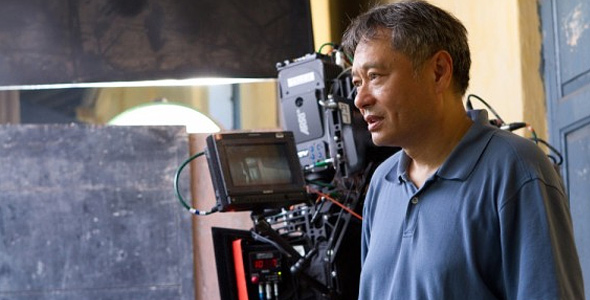
Even as I was writing the action of the film, I was becoming aware of what his visual ideas were. When we got to the point where we had completed the first draft, he began a process of pre-visualizing the whole movie on a computer with the CG artists. I was seeing rough stills of the entire process, starting with the sinking of the boat and the big dramatic scenes. But by the end, he essentially pre-visualized the entire movie.
Even as I was revising, I was seeing how he was going to do it, even though I wasn’t seeing the spectacular visual effects that he eventually came up with.
You can see the fruits of that on the screen, because while the film has a powerful visual strength it has the sort of narrative and emotional connection that is lacking from things that are pure spectacle. And it also strikes a tonal balance by not tipping over into being too schmaltzy.
We were always very careful not to become sentimental about this story. We didn’t want it to be a sentimental story, and especially when it comes to his relationship to the tiger. It was very important to all of us that the tiger not be anthropomorphized into a lovable cat with human characteristics. No, he’s a tiger.
We were very careful to talk to tiger trainers and experts in the field to make sure that the behaviour we were showing was real behaviour. In the course of the film, you know, the father says to Pi, “That tiger is an animal, he’s not your friend, and when you look in that tiger’s eyes all you’re seeing is your own reflection staring back at you.” We wanted to be careful not to turn it into an, “Aw ain’t that sweet moment”.
You’ve just broken a whole lot of animal lovers’ hearts.
Yeah, yeah. No, I know.
But my cat…
[chuckles] But my cat loves me. Well, I’m sure your cat does.
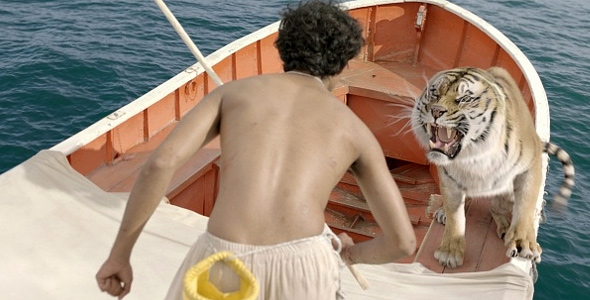
There’s also the sort of framing device with the journalist sitting in the audience’s shoes that could have been another overplayed aspect.
That was a real hard thing for us to come down on because normally, screenwriters warn themselves away from using that kind of a narrative device, where you have the conversation and the voice over leading into the back story. It’s been used a lot. In the case of this, though, because of the ending and the way the story kinda turns back on itself, we needed to have that framing device.
Is the ambiguity of his tale, something that resolves quite differently in the novel? Or is it presented in the same sort of way?
Well, obviously I don’t want to give too much away to your readers, but I think the theme is slightly different in the novel than it is in our version. At the beginning of the book, and the film, Pi says “I’m gonna tell you a story that’ll make you believe in God” or someone says, “Pi will tell you a story that will make you believe in God.” I think the novel wants that story to prove something about the nature of God.
We’re not as concerned about that as filmmakers. What we like is that everyone has their own narrative that helps them get through life, that when you’re faced with chaos, when you’re faced with ordeals, you fall back upon what you’ve learned, and you fall back upon the stories that you have been told, in order to help make sense of, to put a shape to, what would otherwise seem like a meaningless journey.
We’re not concerned with trying to prove to you that Buddhism, Hinduism, Christianity, Islam, any of them are the right story. All we’re talking about is the nature of stories themselves. Whether they’re religious stories or scientific explanations of the universe, it’s all just a little glimpse at what might be the truth, but none of them are fully fleshed. I want to be careful not to offend anyone’s sense of religion.
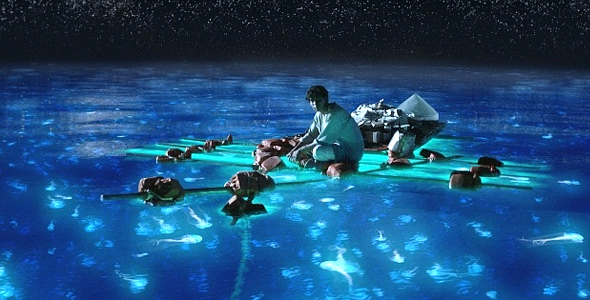
How do you see Life of Pi sitting amongst your other work?
It’s funny. I see a relationship between this movie and Finding Neverland, which I never saw when I started writing it. I thought they couldn’t be more different. But in the end, both are very much about people using storytelling and using the imagination to overcome situations, and very much about the role of the story teller and the artist in the world. I loved that as a theme. I wouldn’t be surprised if I return to that.
As for the budget and the scale of this, it’s a wonderful luxury to be able to work on this scale. Even though there are constraints on you, no matter what you’re doing, to be able to work with Ang Lee and say “For research we really need to go to India,” and to find yourself there a few weeks later with no problem is helpful, is wonderful. But I’m less concerned about whether it’s abig budget film or whether it’s smaller. I’m more excited about the idea of films that kind of open the possibility for more unusual stories and more inventive stories.
Not to tout my own storytelling and say it’s more inventive than anything, but there are certain genres that studios feel safe in. And as soon as there are successes in other genres and in other styles of storytelling, the studios become more open to them, and rightly so, if they realize that they can find an audience there.

